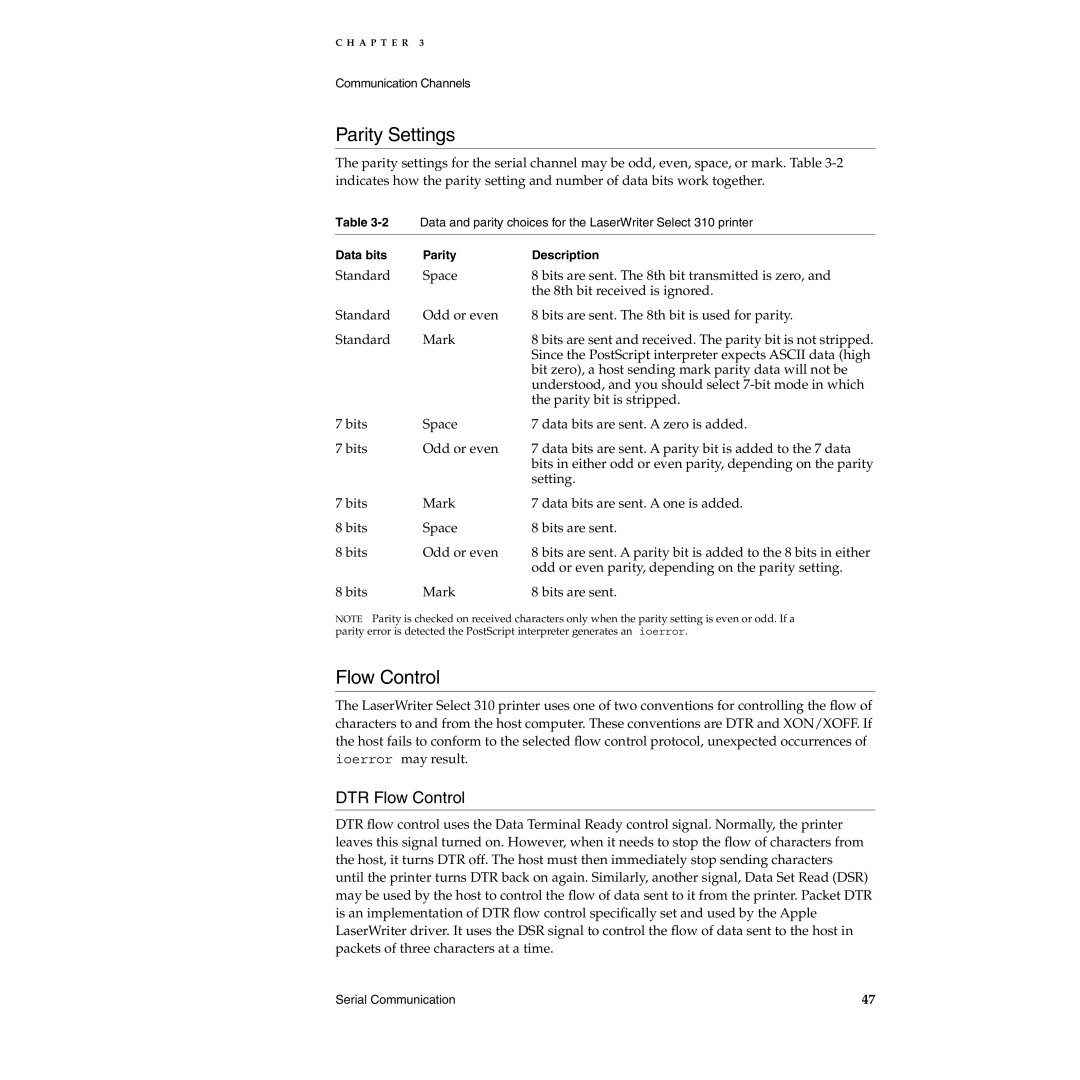
C H A P T E R 3
Communication Channels
Parity Settings
The parity settings for the serial channel may be odd, even, space, or mark. Table
Table | Data and parity choices for the LaserWriter Select 310 printer | |
|
|
|
Data bits | Parity | Description |
Standard | Space | 8 bits are sent. The 8th bit transmitted is zero, and |
|
| the 8th bit received is ignored. |
Standard | Odd or even | 8 bits are sent. The 8th bit is used for parity. |
Standard | Mark | 8 bits are sent and received. The parity bit is not stripped. |
|
| Since the PostScript interpreter expects ASCII data (high |
|
| bit zero), a host sending mark parity data will not be |
|
| understood, and you should select |
|
| the parity bit is stripped. |
7 bits | Space | 7 data bits are sent. A zero is added. |
7 bits | Odd or even | 7 data bits are sent. A parity bit is added to the 7 data |
|
| bits in either odd or even parity, depending on the parity |
|
| setting. |
7 bits | Mark | 7 data bits are sent. A one is added. |
8 bits | Space | 8 bits are sent. |
8 bits | Odd or even | 8 bits are sent. A parity bit is added to the 8 bits in either |
|
| odd or even parity, depending on the parity setting. |
8 bits | Mark | 8 bits are sent. |
NOTE Parity is checked on received characters only when the parity setting is even or odd. If a parity error is detected the PostScript interpreter generates an ioerror.
Flow Control
The LaserWriter Select 310 printer uses one of two conventions for controlling the flow of characters to and from the host computer. These conventions are DTR and XON/XOFF. If the host fails to conform to the selected flow control protocol, unexpected occurrences of ioerror may result.
DTR Flow Control
DTR flow control uses the Data Terminal Ready control signal. Normally, the printer leaves this signal turned on. However, when it needs to stop the flow of characters from the host, it turns DTR off. The host must then immediately stop sending characters until the printer turns DTR back on again. Similarly, another signal, Data Set Read (DSR) may be used by the host to control the flow of data sent to it from the printer. Packet DTR is an implementation of DTR flow control specifically set and used by the Apple LaserWriter driver. It uses the DSR signal to control the flow of data sent to the host in packets of three characters at a time.
Serial Communication | 47 |
